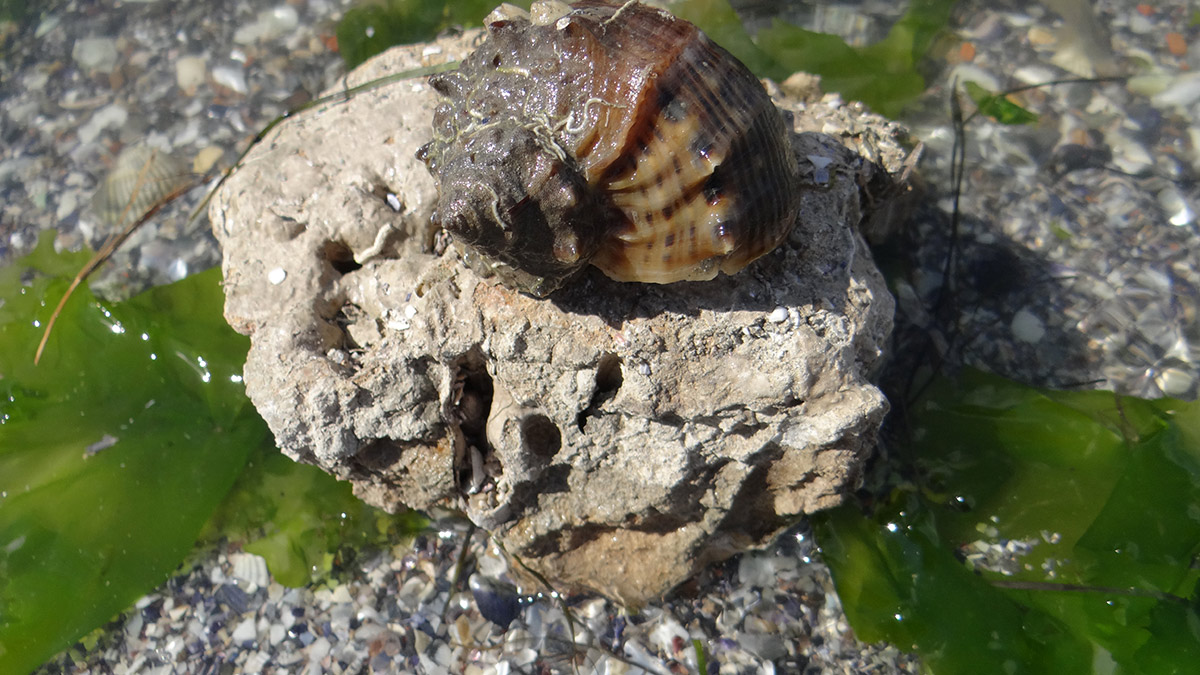Veined rapa whelk
 The veined rapa whelk (Rapana venosa) is a predatory sea snail of the genus Rapana. Its homeland is the Middle and Southern parts of the Japanese Sea (north to Vladivostok and the coast of northern Japan). The species was first found in the Black Sea in 1946 in the Bay of Novorossiysk (the northeast coast of the Black Sea). From there it spreads to the Azov Sea and the eastern parts of the Mediterranean Sea. By 1950 it caused great devastation along the Caucasus coast, later in the Crimea. Between 1959 and 1972, it is already spreading to the western and southern Black Sea coasts. In 1970, it is now a common species for the entire Black Sea basin. In 1973, it was found on the Italian coast of the Adriatic, and in 1998 in the Chesapeake Bay on the North American Atlantic Coast. There is a registered rapa field and the southeastern shores of South America. The overture of the species from its native places in other seas and oceans is carried out with ballast water and clinging cocoons with eggs on the bottom of the ships.
The veined rapa whelk (Rapana venosa) is a predatory sea snail of the genus Rapana. Its homeland is the Middle and Southern parts of the Japanese Sea (north to Vladivostok and the coast of northern Japan). The species was first found in the Black Sea in 1946 in the Bay of Novorossiysk (the northeast coast of the Black Sea). From there it spreads to the Azov Sea and the eastern parts of the Mediterranean Sea. By 1950 it caused great devastation along the Caucasus coast, later in the Crimea. Between 1959 and 1972, it is already spreading to the western and southern Black Sea coasts. In 1970, it is now a common species for the entire Black Sea basin. In 1973, it was found on the Italian coast of the Adriatic, and in 1998 in the Chesapeake Bay on the North American Atlantic Coast. There is a registered rapa field and the southeastern shores of South America. The overture of the species from its native places in other seas and oceans is carried out with ballast water and clinging cocoons with eggs on the bottom of the ships.
The veined rapa whelk feeds on common black mussel (Mytilus galloprovincialis) and oysters in the Black Sea. In other seas and oceans attack species of mussels from the genera Tapes and Anadara. The veined rapa whelk is expanding its habitat over time - except on a rocky bottom, it can already be found in deep waters and even on a muddy bottom.






